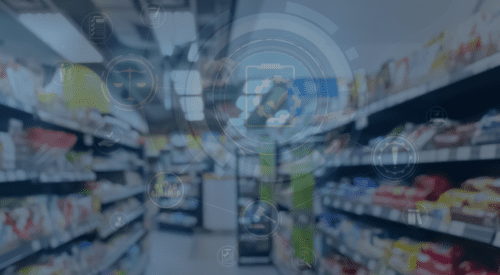While food recall numbers are thankfully declining, for food businesses, protecting their brand, ensuring operational efficiency, and taking care of customers is paramount.
The FDA is hoping to advance food safety in the U.S. through its new Food Traceability Rule. By January 26, 2026, companies must comply with new regulations aimed at increasing traceability across the food supply chain. Let’s explore what the rule entails, the challenges businesses may face, and pragmatic strategies to move toward compliance.
What is the food traceability rule?
In November 2022, the FDA introduced the “Requirements for Additional Traceability Records for Certain Foods.” The rule outlines a list of foods prone to contamination, known as the “Food Traceability List.” It includes items like certain cheeses, leafy greens, fresh-cut fruits and vegetables, and some seafood. These foods are now subject to enhanced traceability requirements throughout their lifecycle, from production to the consumer’s hands.
The Food Traceability Rule is part of a larger effort to modernize food safety and ensure the U.S. food supply remains one of the safest in the world. The rule aims to enhance transparency and ensure that contaminated food can be quickly traced and removed from the market. As food supply chains become more complex, the rule is essential to keeping up with evolving risks.
Key components of the rule:
- Critical Tracking Events (CTEs): Companies must record traceability data at every significant stage in the food’s journey—growing, receiving, processing, shipping, and more.
- Key Data Elements (KDEs): For each CTE, businesses are required to capture and maintain records of specific data, such as location, date, quantity, and lot codes.
- Rapid Traceability: In the event of a contamination outbreak, the FDA must be able to trace the food back through the supply chain within 24 hours.
For example, tomato growers must map their farms, track the tomatoes from harvest through packing and shipping, and record data at each stage. Every entity handling the tomatoes—farmers, distributors, grocers, and even retailers who prepare the tomatoes for consumption—must collect and store data as part of the data chain.
Businesses must retain traceability data for a minimum of two years, ensuring it can be quickly shared with the FDA if necessary. Some entities, such as small farms or restaurants, may have more flexible reporting obligations, but the core requirements are far-reaching.
Challenges to compliance
Compliance with the Food Traceability Rule will not be easy. Companies across the food value chain face significant challenges as they work toward the 2026 deadline. Key challenges include:
- Tracking at the case level: The rule requires wholesalers to track products at a case level, which can lead to errors and operational inefficiencies. Human error, reliance on stickers, and outdated tracking methods can make compliance challenging.
- Varied levels of maturity across entities: Companies within the food supply chain operate with vastly different levels of technology, data systems, and process maturity. Many organizations may not have the necessary infrastructure to handle the new requirements.
- Lack of ownership: Compliance impacts multiple teams within an organization, including food safety, legal, manufacturing, supply chain, and IT. Often, no single person or role is responsible for compliance, making it difficult to implement a unified strategy.
- Unclear benefits: Many companies are unsure whether compliance will lead to improved food safety outcomes. There are concerns that, despite the effort required, traceability will not necessarily narrow down recalls to specific contaminated products. This could undermine confidence in the system’s overall effectiveness.
Cuesta’s vision: A pragmatic path forward
At Cuesta, we recommend a value-based approach to compliance. Instead of merely viewing compliance as a regulatory burden, companies should aim to unlock additional value from the data being collected. By aligning compliance efforts with business goals, companies can maximize both regulatory compliance and operational benefits.
How to approach compliance pragmatically:
- Enhance consumer experience: There is growing consumer interest in food transparency. Ardent Mills Trend to Table research shows that 57% of consumers want to know how their food purchases are good for the planet. By using the data gathered through traceability, companies can provide consumers with more information about their food’s origins, turning compliance into a marketing tool that boosts consumer engagement and drives sales.
- Leverage data for supply chain efficiency: The rich data collected can be used to power advanced analytics, helping businesses optimize supply chain operations. With AI, companies can proactively identify risks, inefficiencies, or bottlenecks, improving both food safety and supply chain performance.
- Data collection: Tools such as SmartLabel, a transparency initiative designed to provide consumers with detailed product information, will allows companies to offer in-depth data on food, beverage, household, and other products, which can be accessed via a QR code on packaging or through a website.
- Master data management (MDM): A centralized MDM system can help companies manage and maintain the vast amount of data required by the rule. This system can create a unified, consistent record for each entity – whether a customer, product, or supplier—across internal and external systems. By tracking CTEs and KDEs, an MDM system can provide a comprehensive view of the supply chain, supporting proactive decision-making.
- Change management: Compliance will require more than just data and technology – it will also require process changes, governance, and accountability. Clearly defined roles and responsibilities are crucial to success. For most organizations compliance will not sit within a single organization, suggesting a CEO-sponsored center of excellence may be needed.
- Data governance and standards: Data accuracy and completeness must be enforced throughout the supply chain. By implementing strong data standards and auditing processes, companies can ensure the traceability data is reliable and actionable. Implementing automation wherever possible can help streamline operations and reduce the risk of human error.
- Collaborate across the supply chain: As the food industry faces increasingly stringent regulations on traceability, organizations such as the Food Industry Association (FMI) and GS1 are stepping up to provide essential resources and support. For example, FMI has created a collaborative platform designed to foster greater industry cooperation. Known as the intra-company Center of Excellence (COE), this initiative helps companies streamline their efforts, collaborate, share insights, and learn from one another’s experiences. This collaborative effort is critical as companies work together to determine how best to share data across the supply chain.
Call to action: start now
Compliance with the FDA’s Food Traceability Rule is mandatory by January 26, 2026. The time to act is now. Businesses should begin by assessing their current systems, exploring data management solutions, and collaborating with industry resources to ensure they are ready. By adopting a pragmatic, value-driven approach, companies can not only meet regulatory requirements but also unlock new opportunities for growth, efficiency, and consumer engagement.
Don’t wait – start your journey toward compliance today with our Cuesta experts.





